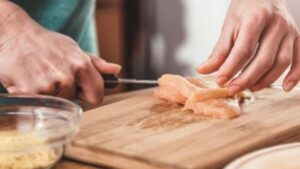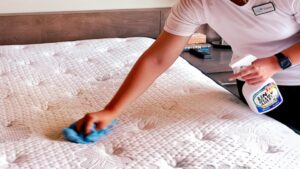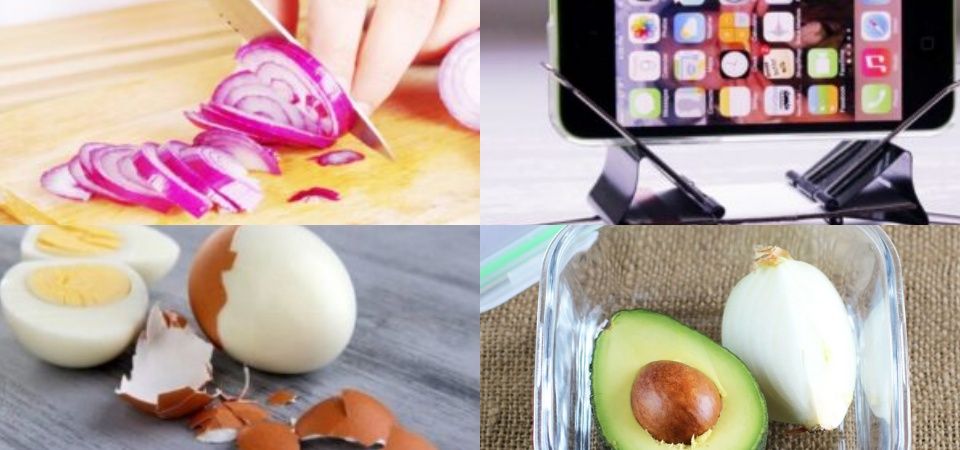Tips For Defrosting Meat Extremely Simple And Fast
Simple and Quick Tips for Defrosting Meat in the Oven
Are you often busy and forget to prepare meat in advance before cooking? Defrosting meat in the oven is the perfect solution to save time while ensuring the quality of your dishes.
Overview:
- How to Defrost in the Oven
- Defrosting Food
- Preparing to Defrost
- Defrosting Process
- Checking
- Cooking Immediately
- Some Notes on Defrosting in the Oven
- Remove Packaging and Wrappings
- Cook Immediately After Defrosting
- Place Defrosted Food in a Covered Container
- Choosing the Right Materials for Defrosting
- Don’t Defrost Vegetables
- Avoid Over-Defrosting Fish
Have you ever been frustrated waiting for meat to defrost for hours? With these super-fast oven defrosting tips, you won’t have to worry about that anymore. With just a few simple steps, you’ll have perfectly defrosted meat ready to be cooked into delicious dishes.
1. How to Defrost in the Oven
Defrosting food is an essential step before cooking. This process softens the food, making it easier to cut and ensures even cooking.
Defrosting Food
Take the food out of the freezer or start defrosting depending on how it was stored:
- Food in trays or containers: Simply and gently remove them from the freezer.
- Food wrapped in plastic or cling film: To avoid tearing the bag or having it stick to the food, transfer it to the refrigerator for about 10–20 minutes before carefully unwrapping it to prevent damage.

Defrosting Food
Preparing to Defrost
After removing the food from the freezer, place it in a heat-resistant dish like glass, ceramic, or other oven-safe materials. Do not cover the dish while defrosting, as pressure can build up inside, creating a potential hazard.
Foods that should not be defrosted in the oven:
- Foods with hard shells (e.g., clams, mussels, snails): Heating them too quickly in the oven can cause them to explode and pose risks.
- Tightly packed or sealed foods: Sealed food packages should not be placed in the oven, as the pressure inside the packaging can increase and cause it to burst.
Defrosting Process
Once prepared, proceed with defrosting the food in the oven:
- Placing the food in the oven: Put the dish with the food inside the oven.
- Setting the temperature and time:
- For conventional ovens: Set the temperature at around 70°C (160°F) and defrost for 10 minutes. Note: Do not set the temperature too high to avoid the outside of the meat cooking while the inside remains frozen.
- For advanced ovens: Select the pre-programmed defrost setting.
Checking
After defrosting for about 10 minutes, remove the food dish and check:
-
- If the food is almost defrosted: If it’s mostly soft and only a small part remains frozen, you can cover the dish and let the remaining heat in the oven finish the defrosting process.
- If the food is still partially frozen: If it’s still hard, place the dish back in the oven and defrost for an additional 3–5 minutes. Use a fork or chopsticks to gently poke the food to test its softness.

Defrosting Process
Cooking Immediately
To ensure the best taste and food safety, cook the food immediately after defrosting. Leaving defrosted food at room temperature for too long encourages bacterial growth, which can affect the quality of your meal and pose a health risk.

2. Notes on Defrosting in the Oven
Remove Packaging and Wrapping
Before placing food in the oven, make sure to remove all packaging, such as plastic bags or cling film. When exposed to high heat, these materials can burn and release harmful chemicals that can affect your health.

Cook Immediately After Defrosting
To keep your food fresh and safe, cook it right after defrosting. Leaving defrosted food out at room temperature for too long will encourage bacterial growth, leading to food spoilage.
Place Defrosted Food in a Covered Container
Using containers with lids, such as glass or ceramic dishes with covers, will help retain moisture during defrosting and limit the entry of bacteria.
Choosing the Right Materials for Defrosting
It’s best to use heat-resistant trays, bowls, or dishes made of glass, ceramic, or metal when defrosting food. Avoid using plastic containers that can’t withstand high heat, as they may warp or release toxic substances when exposed to elevated temperatures.
Don’t Defrost Vegetables
Vegetables should not be defrosted in the oven, as the high heat can cause them to lose valuable vitamins and minerals, as well as alter their texture and flavor.

Avoid Over-Defrosting Fish
Fish is highly perishable. Defrosting fish for too long in the oven can cause it to dry out, lose its natural moisture, and make it more susceptible to bacterial contamination.
Defrosting food in the oven is just one of many defrosting methods. Depending on the type of food and the time you have, you can also choose other methods, such as defrosting in the refrigerator, defrosting in cold water, or using a microwave.
Understanding and applying the right defrosting techniques will help you save time and enjoy more delicious meals.

















